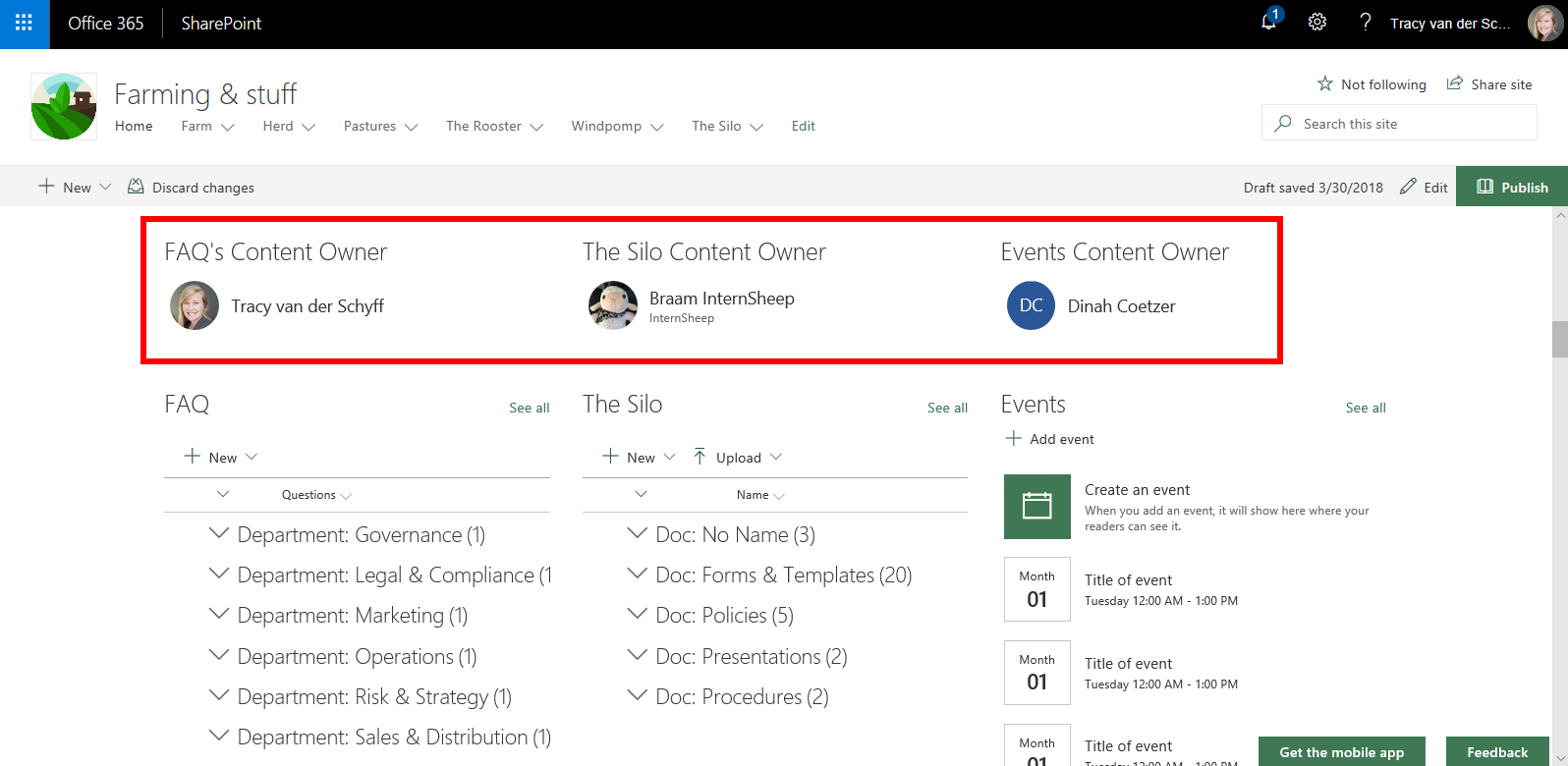#Microsoft365 #Office365 #SharePoint Many times we identify and define responsibilities in separate governance documents. These aren’t always updated or user friendly. And of course no one navigates away to a document to go read up about who to contact.
For previous posts in my #Microsoft365Challenge go to the index page.
DISCLAIMER: I WRITE ARTICLES ABOUT OFFICE / MICROSOFT 365. CONTENT IS ACCURATE AT TIME OF PUBLICATION, HOWEVER UPDATES AND NEW ADDITIONS HAPPEN DAILY WHICH COULD CHANGE THE ACCURACY OR RELEVANCE. PLEASE KEEP THIS IN MIND WHEN USING MY BLOGS AS GUIDELINES.
Visual Responsibility
It helps to identify the owner of specific content for your Intranet on the page above the web part. Of course in my example I might have multiple content owners and this will be identified by the department or process tagged. It’s still important to identify a ‘global’ owner for that collection of content / web part in case users require assistance:
People Web Part
The People web part can be added above the web part and also allows for interaction.
When users hover over the name they’ll be able to contact the person through mail or get other contact details:
Metadata in Library
In the library, I’ve used metadata to identify the document type and process (department). This indicates ownership per item and can also be used to create workflows for revision of documents:
 Remember that if ownership is not assigned, then no one will take ownership. It’s important that your Intranet has relevant, up to date content for your users.
Remember that if ownership is not assigned, then no one will take ownership. It’s important that your Intranet has relevant, up to date content for your users.
If you’re looking at building your Intranet, here’s some great tips and short videos to help you get started in my How to Build Your Intranet with SharePoint Communication Sites in 10 Steps blog on the Metalogix Blog Site.
Purpose of this blog challenge: I will write 365 blogs in 365 days around Microsoft 365. I did a similar challenge with Office 365, blogs can be found here. I won’t just be talking about the new Microsoft 365 subscription model. I will be sharing any news, tips and tricks around Office / Office 365 / Windows / Mobility and Security. And let’s not forget all the great new Apps & services available. A lot of what I’ll share on Office and SharePoint will also be applicable to none “Office 365” versions.




May 17, 2019 at 9:02 am
Useful article! One should always remember that the content owners on your SharePoint site doesn’t necessarily need to be the same as the site owners. A content owner is usually an individual who is in charge of the site’s content and its assets. Like for an HR department site, the content owner would be the HR manager. But, just because someone is a department manager, does not necessarily mean that he or she should be given complete control or admin privileges in SharePoint. To have full control, the user should be familiar with the technical side of SharePoint which an HR manager might not have.